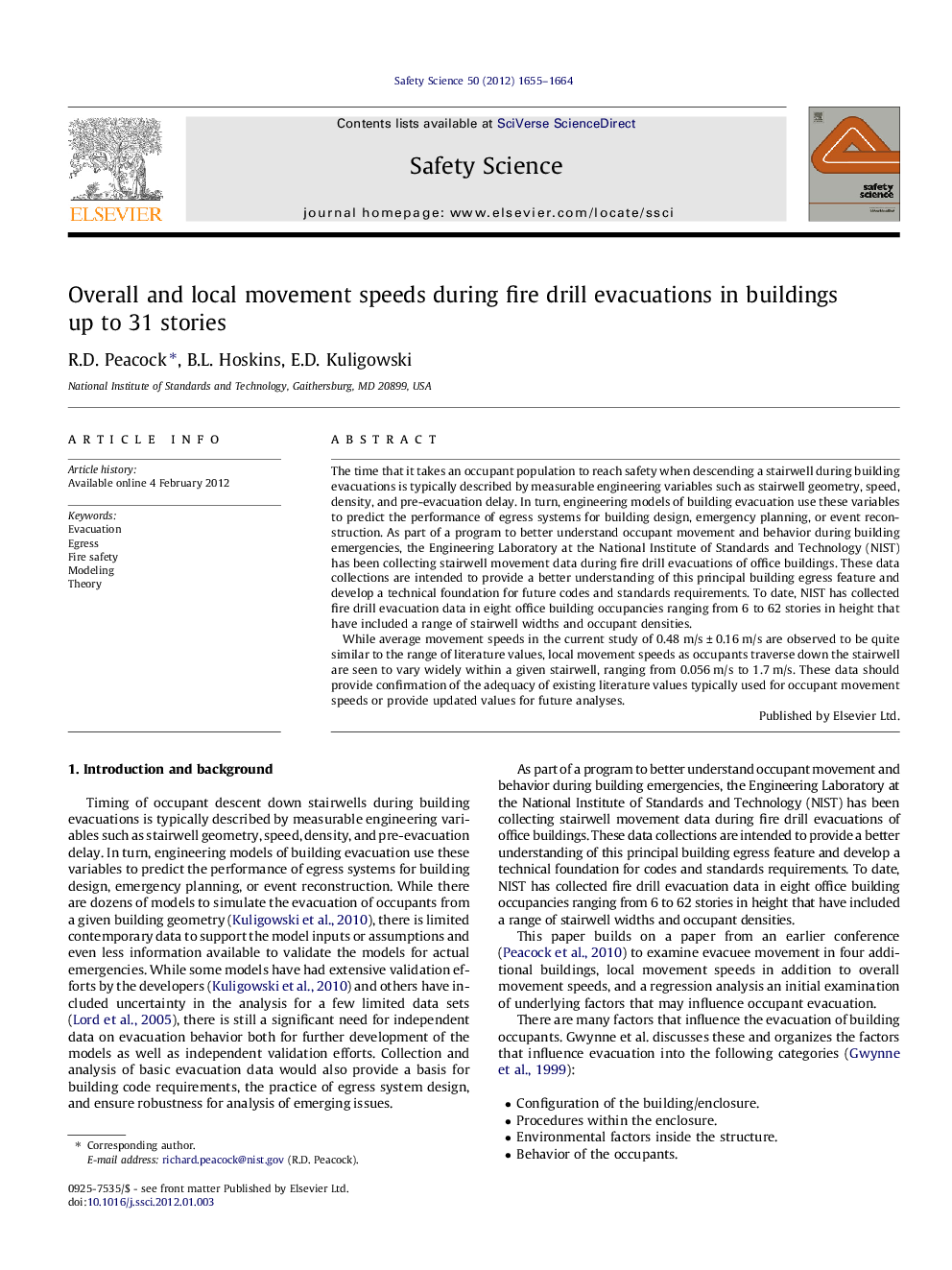| Article ID | Journal | Published Year | Pages | File Type |
|---|---|---|---|---|
| 589148 | Safety Science | 2012 | 10 Pages |
The time that it takes an occupant population to reach safety when descending a stairwell during building evacuations is typically described by measurable engineering variables such as stairwell geometry, speed, density, and pre-evacuation delay. In turn, engineering models of building evacuation use these variables to predict the performance of egress systems for building design, emergency planning, or event reconstruction. As part of a program to better understand occupant movement and behavior during building emergencies, the Engineering Laboratory at the National Institute of Standards and Technology (NIST) has been collecting stairwell movement data during fire drill evacuations of office buildings. These data collections are intended to provide a better understanding of this principal building egress feature and develop a technical foundation for future codes and standards requirements. To date, NIST has collected fire drill evacuation data in eight office building occupancies ranging from 6 to 62 stories in height that have included a range of stairwell widths and occupant densities.While average movement speeds in the current study of 0.48 m/s ± 0.16 m/s are observed to be quite similar to the range of literature values, local movement speeds as occupants traverse down the stairwell are seen to vary widely within a given stairwell, ranging from 0.056 m/s to 1.7 m/s. These data should provide confirmation of the adequacy of existing literature values typically used for occupant movement speeds or provide updated values for future analyses.
